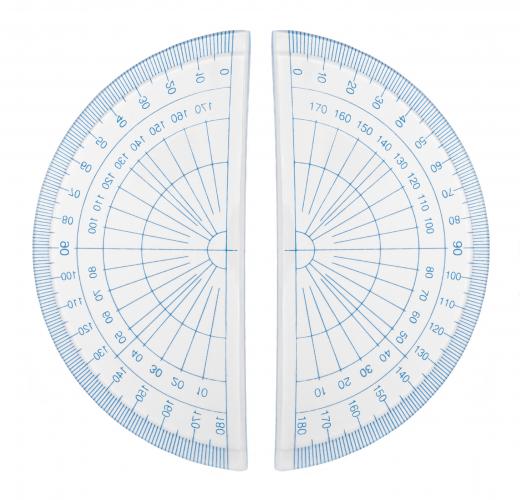A digital protractor allows the user to measure angles with much more accuracy than a hand-held protractor. The digital protractor is electronic and comes with a variety of useful features. The angle measurements being taken are displayed on the screen for the user to read and record.
Many digital protractors consist of a movable arm and a small box in the center that holds the buttons and the display screen. The user places one edge along a straight line and adjusts the movable arm to line up with the next line. This creates the angle the user wants to measure. The results are displayed on screen. For example, if one arm of the protractor was straight and the other pointed straight up, the screen would read 90 degrees.

A normal, hand-held protractor requires the user to line up the straight edge with one line of the angle and wherever the second line forming the angle intersects the protractor, that number is the measurement of the angle. The problem with this method is a higher chance of misreading the angle. Even with the correct measurements, there is no way to measure angles that must be precise and cannot be off by even a fraction of a degree.

The digital protractor can measure angles exactly, making it much more reliable. This is especially helpful for carpenters or builders who are making cuts that must all line up and fit together. Those performing mathematics calculations will find the protractor extremely helpful in achieving correct results.
Other features improve the advantages of the digital protractor. Along with a display screen that shows the angle being measured, the protractor often has a "Hold" button which allows the user to save the current angle while measuring or examining a different area. Other buttons may allow the user to adjust the protractor and temporarily set that angle to zero.
For those who need to transfer angles to use later on, many digital protractors have a slot so they can be plugged into a computer. The data is then transferred from the digital protractor onto the computer for use. They also have other real world applications to them. Certain digital protractors can measure and advise the user what miter and bevel angles they need to cut when working on a project involving a miter saw. The measurements can then be stored on a computer and used in the future when the same cut needs to be repeated.
